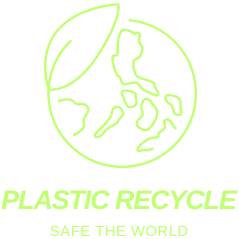
Global plastic recycling rates are now stuck at under 10 per cent, a comprehensive new study shows.
Plastic production has exploded in the meantime, creating a “pressing global environmental challenge”, according to researchers from Tsinghua University in China.
The vast majority of plastics are made from virgin resin using fossil-fuel based feedstocks, which “compromise[s] the global efforts to mitigate climate change.”
Their findings, published in the journal Communications Earth & Environment on Thursday, add to a relatively small but growing body of research on sources of plastic pollution throughout the supply chain.
An investigation last month linked more than 25 major brands using plastic packaging to fracking in America’s Permian Basin – described as a ‘carbon bomb’ for the catastrophic impact its full extraction would have on global emissions.
How much of the world’s plastic is recycled?
To create a first-of-its-kind analysis of the global plastics sector, the researchers drew on national statistics, industry reports, and international databases from 2022.
They found that just 9 per cent of the 437 million tonnes of new plastic produced that year came from recycled materials.
“The global recycling rate remained stagnant […] reflecting little improvement from previous years,” according to authors Quanyin Tan, Khaoula Houssini and Jinhui Li.
The US – the largest consumer of plastic per capita – has one of the world’s lowest recycling rates at just 5 per cent reuse, they note. It worsened after China imposed a ban on plastic waste imports in 2018.
A shift from landfill to incineration
Although the recycling rate remains stubbornly at 9 per cent, there has been a “significant shift” within waste disposal from landfill to incineration.
Landfills are still the main destination for plastic rubbish, at 40 per cent, but this share has been declining in recent years, while incineration has risen to 34 per cent.
Japan, China and the EU have among the highest incineration rates for plastic waste, accounting for 70 per cent, 60 per cent and 38 per cent respectively. In Europe’s case, this is attributed to the continent’s focus on energy recovery and waste-to-energy initiatives.
Burning plastics comes with its own risks too, however, releasing harmful pollutants that require advanced technologies and a tight regulatory framework, the researchers caution.
Why is so little plastic recycled?
While consumers sort their waste with the best of intentions, only 38 million tonnes of the 75 million tonnes of plastic sorted and collected each year ends up being recycled.
A number of factors are holding plastic recycling back, the study explains. For one, the huge array of plastic materials makes processing them difficult. Food smeared onto plastic, labels, and other kinds of contamination further impede the process at recycling facilities.
From an economic point of view, virgin plastic can often be cheaper to work with than recycled plastic, largely due to fluctuating oil prices. This discourages investment in recycling infrastructure and technology, keeping recycling rates low.
More should be done at the design stage too, the researchers say, to ensure products can be recycled efficiently.
Can an international treaty stem the flow of plastic?
Plastic is integrated into all parts of our lives, but it casts a heavy environmental shadow both up and downstream.
Around 98 per cent of the virgin plastics produced around the world in 2022 was generated from fossil-fuel based feedstocks, the new study finds, including 44 per cent derived from coal, 40 per cent from petroleum and 8 per cent from fossil gas.
To tackle this major source of emissions and clean up plastic pollution in the environment, the world is thrashing out a legally binding treaty on plastics.
Negotiations fell apart in December but are set to resume in August in Geneva. The researchers say they hope their overview of the lifecycle of plastic will help inform a successful outcome.
“This study is yet another reminder that we cannot recycle our way out of plastic pollution,” comments Delphine Lévi Alvarès, global petrochemicals campaigner manager at the Center for International Environmental Law, who wasn’t involved in the study.
“Plastics are essentially fossil fuels in another form and serve as a critical lifeline for the fossil fuel industry. The first and most important step in addressing both plastic pollution and the climate crisis is to cut down on the production of virgin plastics.”




